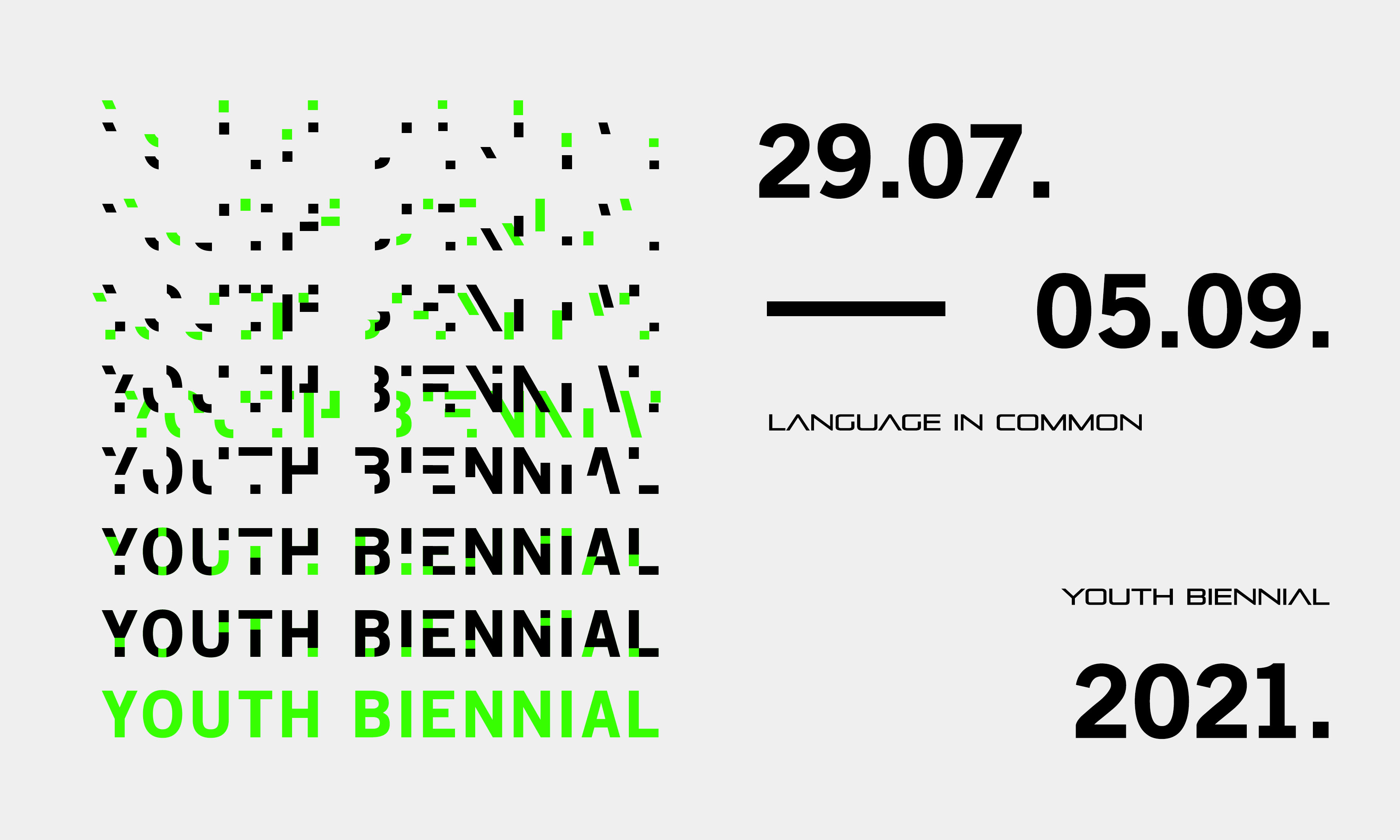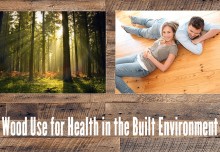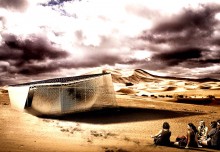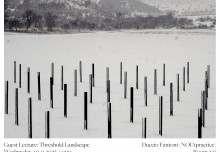The Association of Fine Artists of Serbia (ULUS) is inviting young artists and other creators under the age of 35 to participate in the Youth Biennial 2021 which is called Language in Common, and will take place from July 29th until September 5th 2021 at multiple locations in Belgrade. Young artists can participate in two categories: (1) New productions of artworks, which will be developed and realized as part of the Youth Biennial 2021 – Language in Common (May-June) and for which production will be secured. (2) Already finished artworks for participation in the exhibition.
The call is open until the April 20th 2021.
ZAJEDNIČKI JEZIK // LANGUAGE IN COMMON
Language in common is primarily a combination of differences. It is built through collective effort and a constant exchange. We perceive Language in common as a space of freedom where we fight for what we care about, by believing in it, by being dedicated, by experimenting, exploring and by insisting on collective expression. A language in common doesn’t have to be uniform, it depends on the context in which it appears. Communicating through the use of the common signifier “we” does not mean speaking on behalf of somebody – it is an attempt to establish a new collective body which “speaks” a language in common, because it understands, feels or experiences similar problems. Language in common is a constellation of symbols, hashtags, neologisms, emojis but that’s not all it is. It is also a system of communication of a revolutionary collective in the making. It is a meeting point for a new generation which communicates through different means, in a way that is slightly cryptic to previous ones, through new rules, new challenges and new tendencies.
New meanings and values, new practices, new relationships and types of relationships are continuously being created, and a new “language” implies a readiness for them to be recognized and defined. This is why we invite all those who want to be accomplices, partners, conspirators, builders of a new language and coauthors, as well as all those who create, write, deliberate, who express themselves visually, through movement or sound, to map out issues, concerns and the white noise of contemporary society together with us, as well as for us to explore the horizons and spaces of the future – how they look like, how we reach them and what is needed to leave or disappear for them to be made known to us.
We thought about the following topics:
CONFINEMENT
Isolation, loneliness, claustrophobia, crisis, white cube, identity, ideology, social media, introspection/freedom.
The ubiquitous feeling of loneliness which has swallowed up an entire generation has reached its peak with the arrival of the pandemic. We are living in a historic moment where we are one click away from all our loved ones, every museum and film, and yet we still feel unsatisfied. The physical and psychological isolation has never been as tangible. Where do we begin with the demystification of this feeling, and what is it anyways?
Wherever we go we are met with a prevailing feeling of being closed off. What are these boxes that we find ourselves in, and what exactly is stopping us from escaping out of them? Have we been secluded by force or comfortably tucked in between the walls? Can we establish a community despite the closed borders, differing ideologies and artistic traditions? Slightly ironically, with the title Confinement, I want us to start a dialog and reevaluate different aspects of isolation. In order to solve a “problem”, you must first accept that it exists in the first place. That is what this is about. Let’s define the limited spaces in which we think, create and live and explore the issues related to institutions, ideologies, societies and generations together.
Curator #1
BREATHING
Togetherness, urgency, necessity, flow, exchange, revival, breath, freshness, rhythm, change, mobility, permeability
In the air, everything disappears, evaporates, vanishes, we all breathe it in simultaneously. It is the space which we inhabit, exchange, take for ourselves and consume, in which we meet and “coexist in a common ecology”, in a common system. In today’s world, our spaces of togetherness are jeopardized from different sides. They are displaced and modified, and dealing with the topic of air falls into the domain of political ecology which, as an interdisciplinary field, examines how unjust power relations and their discourses form the way in which the relationships between humans and nature are articulated, experienced, produced and points to what consequently leads to physical and psychological breathlessness which we feel everywhere. There is no air in megalopolises which are suffocating in pollution, in precarious working conditions which exploit workers, in the ubiquitous fear of violence, war, aggression, in the anxiety attacks caused by (im)possibilities.
In the moment in which Berardi`s “breathlessness” is more present than ever, it is time to ask ourselves what are all the things which bring us to this airless state? What is it that restrains the correct individual and social respiration? What represents the impediment to the natural air flow? How to “breathe freely”? What is it that represents fresh air today? Is fresh air a luxury or a basic right? What are the alternatives and are there any? What are the spaces of freedom? How to win them over or form them? How to utilize air as an element and as an example of a decent system of networking and exchange, the flow of information, and what about breathing as a method of resistance? How to create your own “breathing space” and what is it anyways? How to bring in fresh air and ventilate institutions, establishments and positions? How and by what means to address all those questions which we do not name, and yet they are there somewhere “in the air”?
Curator #2
POST-
Post… post… pos..t, crisis, youth, polarization, imagination, capitalism.
Post-pandemic – Is it even possible to return to a “normal course of life” after this experience? Will this be yet another experience which you will overcome, and mark your present with the prefix POST – The post-pandemic society? Can you pretend to live normally, after the emotional, economic, psychological and political violence which you have endured?
Post-youth – Young artists are often perceived as generators of new worlds and a new energy, but are you in particular ready to spin the wheels of social imagination? Where is the motivation? Where is the guilty conscience? And where is the youth which one is supposed to live carelessly? Are you entitled to it? And what if there is nothing after youth?
Post-truth – Today’s social dialogue rests on antagonism and extreme polarization. Fake news, paranoia and life in a bubble of like-minded people have brought about the destabilization of confirmed scientific discoveries and have compromised the ethics of journalism. Who do you trust today and why do you trust yourself?
Post-humanism – Is the contemporary human enough or do we have to look for new alternatives and cohabitations so that we can survive in some future world? To what extent have foreign bodies inside of us – steel, silicone, pacemakers, and vaccine viruses – already made us into cyborgs? A cyborg is half human, half machine – a fluid being without prejudices. “Cyborgs are not reverent; they do not remember the cosmos”, wrote Donna Haraway. Who’s afraid of a strong cyborg?
Post-capitalism. “It’s easier to imagine the end of the world than the end of capitalism.” (Fredric Jameson or Slavoj Žižek, probably)
Curator #3
—-
✘ We don’t want yet another boring, colossal and unnecessary exhibition
✔ We want to make a difference together
—-
This is our plan:
ATTENTION & LISTENING
(WORKSHOPS)
Workshops are envisioned as conversations, reading groups and discussions with curators of the biennale, the organizational team and relevant interlocutors, during which the initial ideas and concepts of artworks would be more fully developed. Workshops are planned for May 2021.
INTERACTION & PLAY
(PRODUCTION)
June and July are dedicated to the production of artworks, as for the necessary materials and working conditions, they will be provided by the organizer in accordance with the financial capabilities. We encourage, not only individual work, but also forming groups/collectives in the realization and production of final artistic pieces. The artworks can be envisioned and performed in a large variety of media: video/audio (with the support from the Students’ City Cultural Center), written word, performance, art installation, site-specific intervention, artworks which are created at the intersection of art and science (with the support from The Center for the Promotion of Science), painting, sculpture, etc…
TALKING
(FINAL EXHIBITION AND THE DISCURSIVE PROGRAM)
For the most part, the exhibition will take place at Kalemegdan fortress, in the period from July 29th until September 5th. It is recommended that the artworks are thought through in regards to the given venue: public surfaces and the institutions which are to be found there (the Nebojša Tower, the Observatory, the Natural History Museum, The Belgrade ZOO, the Military Museum, The Roman Well, Barutana, the Amusement Park, etc…)
The discursive program will take place during the period of the exhibition and will address the topics initiated in the exhibition. Through conversations with competent speakers from the fields of the humanities, as well as natural and applied sciences, we will try to answer some of the posed questions and move young people towards thinking through important social topics.
APPLICATION PROPOSITIONS:
The call is open to all artists under the age of 35.
- a) In case you already have an artwork which you think fits into some of the topics we opened, you need to send us the following:
- Bio (send us something which best represents you and your practice – text (a narrative biography, poetry, an essay, etc…), audio (an audio statement, an audio recording, etc…), video (a video essay, a video statement, a video art etc…)
- Portfolio – optional and in any form (Behance, Instagram, PDF, website, etc…)
- Photo /visual presentation of your work
- b) In case you want to participate in the curatorial workshops and produce a new artwork, your application should contain the following*:
- Bio (send us something which best represents you and your practice – text (a narrative biography, poetry, an essay, etc…), audio (an audio statement, an audio/sound recording, etc…), video (a video essay, a video statement, video art, etc…)
- Portfolio – optional and in any form (Behance, Instagram, PDF, website, etc…)
- Art concept (up to 500 words).
- An approximate technical specification needed for the realization and
the setup of the artwork
*Having in mind the unfavorable situation regarding the Coronavirus pandemic, this year we are sadly not able to secure the participation in the workshops and the production of artworks to the participants of the Youth Biennial who live outside of Serbia. If you live outside of Serbia, we ask you to please apply only with a finished artwork
You can send the application material to the following email address: konkurs.bm@gmail.com with a titled subject: Name and Surname_ Application for Participation at the Youth Biennial 2021.
The application deadline is April 20th 2021.
For more info please visit:








